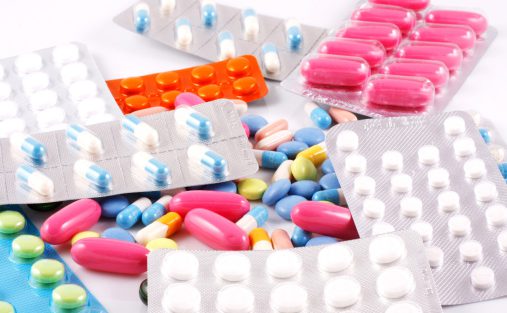U.S Pharmaceutical supply chain is very complex. Today, up to 40% of the drugs Americans take are manufactured outside the U.S., as well as up to 80% of the active pharmaceutical ingredients in those drugs. The number of prescriptions has significantly increased. In the U.S. alone, the volume of prescriptions has almost doubled in less than 15 years. Looking at global figures, growth in the consumption of drugs has increased 32 percent from $735 billion in 2007 to $965 billion in 2012, and consumption is projected to reach about $1.2 trillion in 2017. We should not forget that over-the-counter medicine consumption has increased at an even higher rate.
Today, materials are procured from multiple countries, manufactured somewhere else, potentially packaged in yet another country and distributed and sold globally. A single event in the world, can interrupt the global supply chain for certain products.
The pharmaceutical supply chain in the United States is intricate, which originate in manufacturing sites; are transferred to wholesale distributors; stocked at retail, mail-order, and other types of pharmacies; subject to price negotiations and processed through quality and utilization management screens by pharmacy benefit management companies (PBMs); dispensed by pharmacies; and ultimately delivered to patients.
Unfortunately, there are many points at which products can be contaminated during the journey from raw source materials all the way to finished products for consumers. The following summarize the four primary risks executives should be aware of and work to mitigate:
Intentional adulteration due to contamination in the manufacturing, storage, or distribution process, or from ingredient substitution for economic gain, is more prevalent with global supply chains. Adulteration can result from a number of sources including foreign and domestic terrorist organizations or activists, economically motivated persons or groups, or even disgruntled employees.
Cargo theft is the criminal taking of any cargo that constitutes a commercial shipment of freight moving in commerce. In 2014, $89.5 million of cargo theft was reported in the U.S. alone, according to CargoNet. Inbound Logistics reported that in the U.S., the most highly sought after shipments are pharmaceuticals, consumer electronics, apparel and food.
Counterfeiting is fraudulently mislabeling a product in identity or source. Operation Pangea VIII, the latest annual operation coordinated by INTERPOL to combat the online sale of counterfeit and illicit medicines seized a record 20.7 million fake and illicit medicines from 115 countries, valued at $81 million.
Diversion of products from the intended authorized market to another also poses a significant risk to supply chain security.
Pharma companies have to manage incredibly complex supply chains and manage the operational challenges of working and interacting with huge numbers of suppliers contributing ingredients and components to drug production. And now they need to meet track and trace directives and comply with new serialization regulations that require inventory to be auditable as it moves through the supply chain.
Pharma companies rely on their traditional ERP systems which do not provide a holistic and complete view of the production and movement of goods from start to finish that is now needed. With these traditional models, each link in the supply chain has its own systems that often cannot connect into each other so the level of visibility so desperately sought is difficult, if not impossible, to achieve. Networking suppliers, partners, and logistics providers along the supply chain can offer a more comprehensive view of activities. Organizations need a collaborative system that is equipped with reliable information throughout the Pharmaceutical supply chain.

